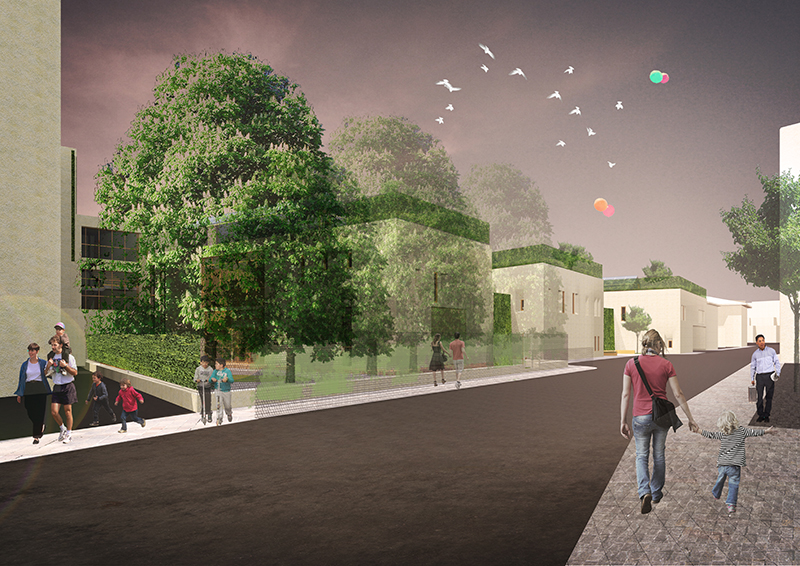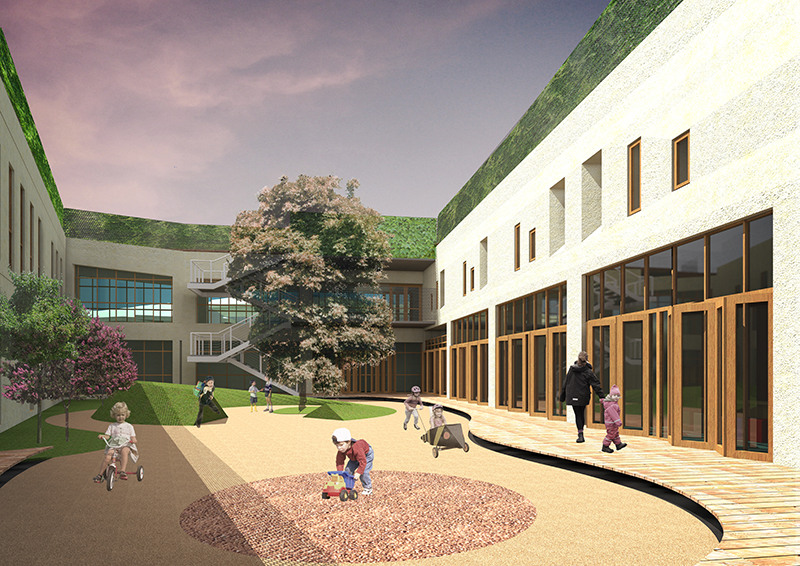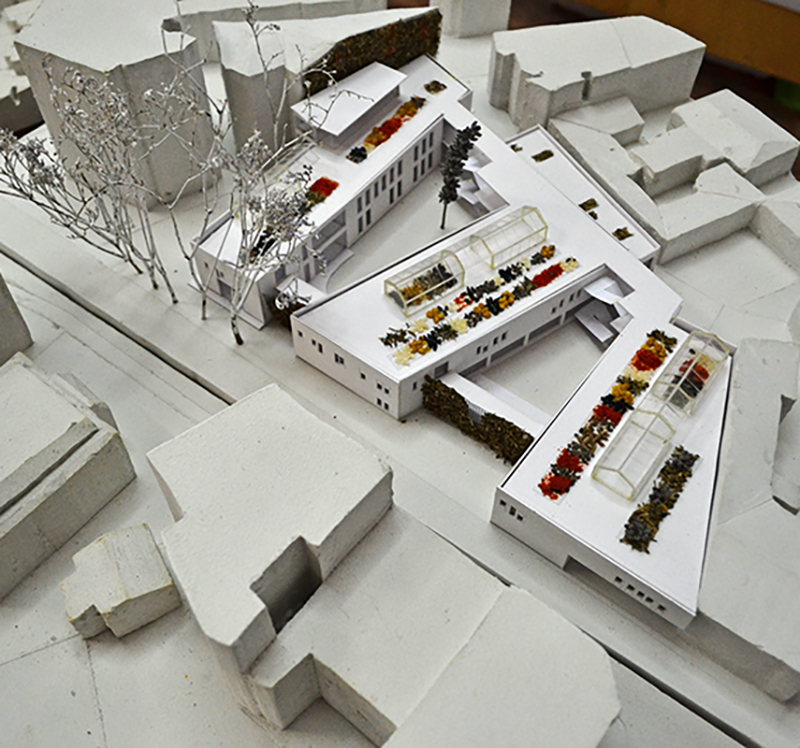Co-autori
-
Birou de arhitectură
-
Colaboratori (membri ai echipei):
-
Colaboratori externi:
-
Location:
Strada Mântuleasa nr.7-9, București
Client:
-
Buget:
-
Text de prezentare a lucrării:
THE GARDEN OF CHILDREN on Mantuleasa Street
It’s Monday morning. The children with their parents enter the chestnut tree yard. The trees flowered like every year. Ana picks up fallen flowers and takes them to the painting hall. Today the parents are coming to see the pottery exposition. The small group has sports and dance class. The weather is lovely, so Missus will take the children outside. The big group climbs to the greenhouses. They planted strawberries that need watering.
There is noise coming from the dining hall. Alex dropped a box of tomatoes and everyone jumped in to pick them up. In the sculpture hall the last arrangements are being made. It is almost evening and the parents should be arriving. Missus prepared a small artistic moment to greet them.
The sun goes down, the exposition is ending and everyone has gone up the terrace. Ana saw a bee around the marigold flowers. She pics up a flower and brings it to her mother, telling her how she planted them and now they have grown so big.
The site is located on the west side of Mantuleasa street, in the central area of Bucharest. One of the oldest streets in the capital, Mantuleasa creates a route that walks through several epochs. During Alexandru Ioan Cuza, the street was still bounded by vegetable gardens, orchards and houses. As urban densification took place, the built density on the parcel grows as the number of constructions. In the collective memory, these places are kept and told through the writings of Mircea Eliade, who grew up and attended the Mantuleasa School, a building situated on this very site which was recently demolished. In the linear trail of the existent street, the site is a space of memories, a mystical place, with it’s 6 secular chestnuts survivors.
The garden of children is an experimental kindergarten that brings back to the community life the joy of children and green gardens.
The building completes the urban island by relating with the 3 blind walls and taking over the typology of nearby enclosures. It is composed of 3 volumes interconnected through courtyards of various functions. By fragmenting the whole I obtained variety of interior spaces and preserved the human scale image of the street.
“the neighbourhoods grown over night, contain preferred corners, small public gardens forgotten by God” Mircea Eliade





































































